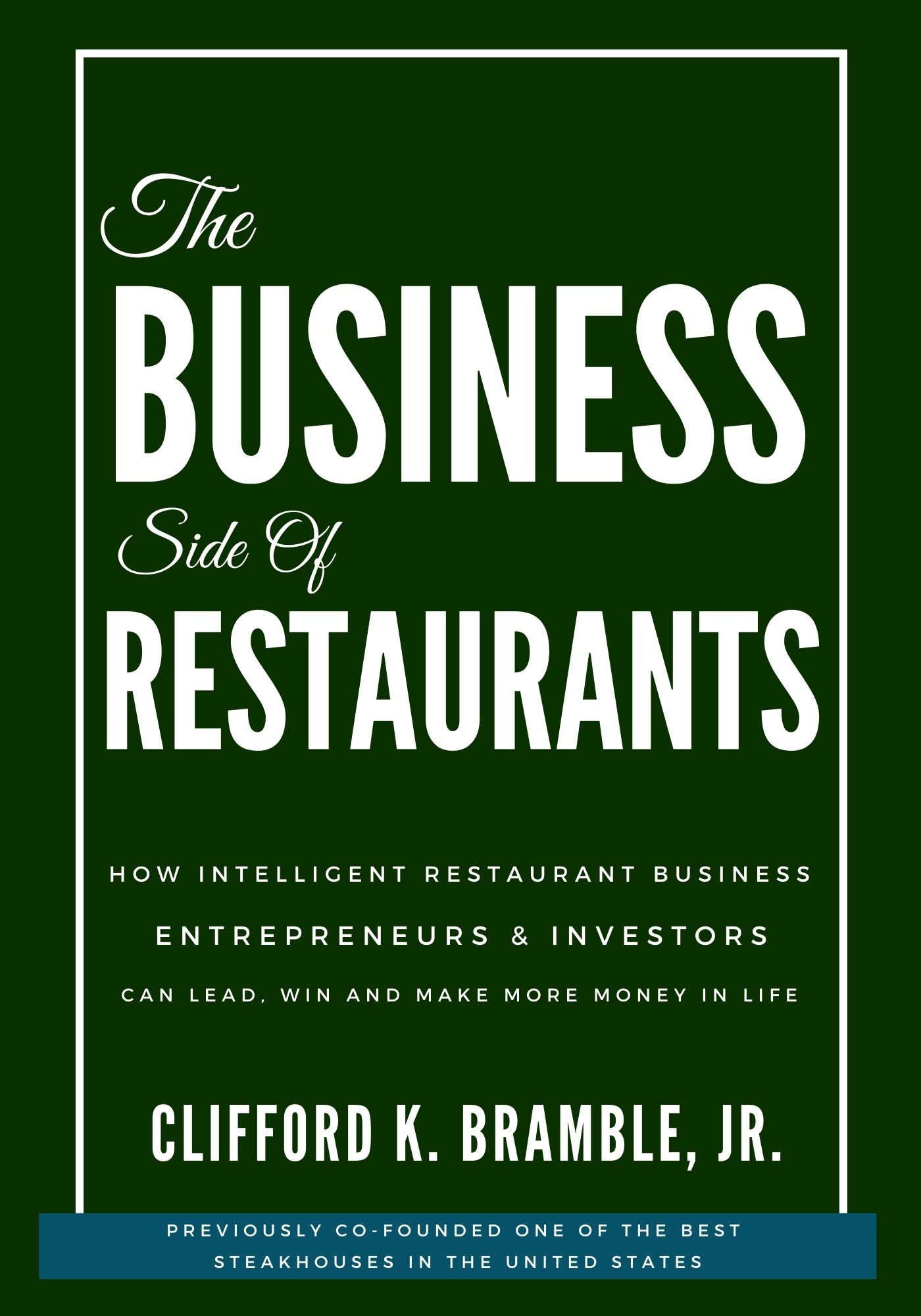Sales Mixes: Analyzing Food Costs and Pricing
5 Min Read By Cliford K. Bramble
Below is an excerpt from The Business Side of Restaurants: How Intelligent Restaurant Business Entrepreneurs & Investors Can Lead, Win and Make More Money in Life by Clifford K. Bramble.
Every item sold within a business contributes to the product mix of item sales. The goal is to make sure they are all working in unison to make the business profitable.
This step can apply to any type of business. It's based upon sales cost for products to make sure all products sold contribute to profit. If products are not profitable and are not selling as well as the others, they are not contributing to the profits. Drop them and sell products making the most money for the business. If this means deleting menu items, don't be afraid to do it. Otherwise, these products may go to waste. Maybe the menu item needs a better menu description. If there is a menu item listed as "Roasted Turnips," it may not be a top seller. Good words sell food. Bad words do not. Keep this in mind. Before an item gets deleted from a menu, change the menu description or change the item's location. It's incredible how quickly a menu item sells simply by changing the location.
The data to analyze with food is the following: food sales, food costs, sales mixture, food inventory, cost of goods sold, menu pricing, invoice reviews for accuracy of pricing, stock on hand, beginning and end of day protein counts, and daily sold items. There is a lot of information here, but it all works together to make the business more profitable. By being responsible for the topics, the area should contribute to the business's profitability.
Purchasing of Foods
Each day, the chef purchases more food. Many people simply call in the order and never know the price until the items arrive. However, it's imperative the chef or whoever is ordering the ingredients knows the costs. Why? They have to price it on the menu and add it to the inventory. They need to prioritize knowing the seasonality of the pricing and the supply and demand at ordering. Additionally, by having the same person receiving the products, they can review the product's quality and learn the prices better. To reduce the risk of any waste, before ordering, a quick inventory review should be done. If the orders are ordered before walking through the walk-in cooler, and more of the same products are ordered, there could be lots of extra, old, outdated food in the walk-in cooler.
When the invoice arrives with the food, the invoice's data will need to be logged into either the accounting program or a purchasing log spreadsheet. There needs to be a system in place, and all management should adhere to it. Either way, the invoice's data consists of the pricing, date, pack size, items, and invoice number. The invoice number's importance is so when it's logged into an accounting program, the program will only take one invoice number and not be allowed to punch in the same number twice. This will assist the payable clerk with not paying invoices twice. The pricing and size data enable the chef to know and log the products into inventory and price the products accordingly.
One additional note on the invoices: When a new invoice arrives and requires a new vendor account, the accounting person should always ensure a signature of approval on the invoice before entering the invoice. Why? If the invoice requires a new vendor setup, the account payable person should ask the management about the new company and the invoice. Why? There is a risk the invoice is bogus. It's best to make sure the new vendor is legitimate and not a vendor with a fake invoice. Entering an unsigned invoice and a new vendor into the accounting software carries the risks of paying fake invoices.
EXAMPLE: An invoice arrives at the restaurant via regular mail. The payable clerk never asks about the new vendor or new invoice. They receive the unsigned invoice, input it into the accounting system, and pay the invoice. The vendor was a scam, and the invoice was submitted with the intention it might get by the payable clerk. It did. The payable clerk should have raised their hand and asked the management team about the new vendor and invoice.

Food Costs
When pricing menu items, knowing the cost of the ingredients is imperative. For many full-service restaurants, maintaining a food cost under 30% is crucial to its profitability. The only way to get this cost percentage would be to have the products priced correctly.
How do you arrive with the menu item cost? It's easy; add the costs of the food on the plate plus the labor cost. (Some chefs add the labor cost, and some do not.) To get the whole plate cost, the manager needs to know the menu item's prices and ingredient quantity. Therefore, they will need to have access to the invoices. They will have to take the menu item's total cost and divide it by the expected menu price.
For example, if the menu item includes starch, protein, and vegetable, along with bread, costs $12, and the menu price is $36.00, the food/plate cost for menu items totals 33.3 percent. (This is the cost of goods sold.) How is the cost kept low? Sell more side items, desserts, pasta, or rice dishes and portion correctly.
One item to remember; each menu item will be a different cost of sales. There will need to be lower-cost menu items on the menu for the food costs to be within expectations. The lower-cost menu items should assist in bringing down the higher-cost menu items.
Menu Savings Ideas
- Don't change the menu. (One of the best restaurateurs in the country once told this to me.) "If the menu is changed, you lose guests, consistency of the product is reduced, and additional labor occurs."
- Skip the tasting menus – They increase food costs and are not cost-effective for the business.
- Give the guests what THEY want, not what the chef wants to cook.
- Use QR codes for the menu. Covid-19 made the guests aware of them.
- Use smaller plates. They give a better guest perception to value.
- Charge for the bread and butter, or do not serve it at all. If it’s on the menu, people have an option.
- Stop family meals for the staff or charge them per day. Food and labor cost money.
- Create daily specials of products already on hand.
- People love comfort food. Make the menu accessible to everyone rather than the top active diners.
- Keep the menu simple. Reduce it if needed.
Menu Sales Mix
The next big food data to be aware of is the menu mix reports. For example, if seventy percent of the food items sold have a food cost of 40% (steak, for example) and there are no less expensive menu items sold, the food cost may start at 40 percent and increase from there. Why? The menu mix is all high-cost steaks. Food cost will be higher because each broken-down protein results in waste and a yield. If there is a lot of waste on the product, it may yield less and drive up the food cost. If the chef is ordering the steaks pre- cut, they may prefer buying the steaks in bulk and cutting the steaks themselves. While the cutting of the steaks in-house reduces the food cost, it increases the labor.
Making the menu is even more important than purchasing the products. The menu mix has to be smart. The menu has to have lower-cost items available, which will help bring the overall food cost down. Possible lower-cost items include vegetables, pasta, potatoes, rice, couscous, okra, or ingredients people love and, at the same time, fill the plate.
The plate size is another consideration. The reason is in America if the plate is not full and has what some may call "white space," the guest's perception of value may be diminished. Sometimes, a smaller plate is the best option rather than a plate with two-inch rims.


